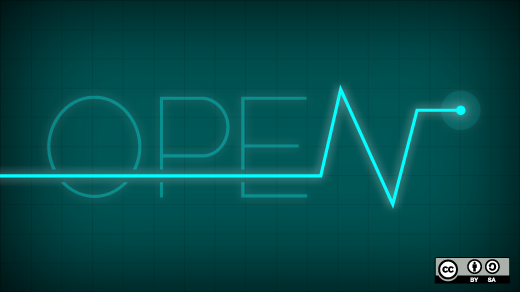Access to high-quality human biospecimens such as blood, saliva, plasma, DNA, and RNA is integral to developing a better understanding of diseases and advancing molecular technologies, clinical trial research, personalized medicine research, and clinical practice.
Biobanks play a crucial role in this by collecting, processing, storing, and tracking a wide array of biospecimens. However, without high-quality standards-based clinical and pathological annotations, these specimens are not useful. The type and extent of annotations collected differs from biobank to biobank depending on research focus, disease, and geography.
What is OpenSpecimen?
OpenSpecimen is an open source biobanking informatics platform that permits users to enter and retrieve data concerning the collection, storage, quality assurance, and distribution of biospecimens. Its most important feature is the ability to collect high-quality, standards-based data specific to a disease or set of study requirements.
OpenSpecimen, previously known as caTissue, was initially developed with U.S. National Cancer Institute funding under the caBIG program. When the caBIG program closed down in 2011, Krishagni Solutions continued the development and support of caTissue while maintaining the open source nature of the product. In 2014, Krishagni renamed the product to OpenSpecimen to indicate that the product can support any disease (i.e. not just cancer) and any specimen type (i.e. not just tissue). The renaming process involved community voting from a pool of shortlisted names.
On the technology front, OpenSpecimen v2.0 utilizes the latest web technologies. The user interface is developed using super-heroic Angular JS, Responsive Bootstrap, HTML5, and CSS3. The kernel implemented in Java Spring and REST APIs. The new code base will have near 100% code coverage using Sprint test framework, JUnit, DBUnits for kernel and Jasmine, and Protractor and Grunt for testing web UI.
OpenSpecimen community development
When the National Cancer Institute funded caTissue’s development, it also managed the community, maintained code, documentation, and forums. When funding was pulled and Krishagni took over, there was considerable uncertainty and turmoil in the community.
Some of the adopters lost confidence and switched over to other options, while others were unsure of the project’s future. It wasn’t easy rebuilding that trust and confidence, especially as a small India-based software company.
As Krishagni started making significant contributions to the product in performance, usability, new features, and bug fixes, adopters of caTissue started seeing value in upgrading to the new version, "caTissue Plus." This is when significant community contributions started flowing into development. Biobanks at Washington University, University of New South Wales, University of Leicester, and Singapore General Health funded usability and performance enhancements, as well as new features.
Despite this, most community contribution has been in the form of feature requests, reporting bugs, inputs, testing, and product evangelism. The legacy code quality made it difficult for outsiders to easily understand and modify code. This scenario will change drastically in the near future with OpenSpecimen v2.0, which will have significantly higher code quality and use the latest web technologies and design paradigms.
In December 2014, the first annual community meeting, OSCon2014, was held at Washington University in St. Louis, Missouri. It was attended by more than 40+ biobankers from 20 centers from USA, UK, Singapore, Egypt, India, and Canada. Attendees discussed several topics of interest, such as release plans, pain points, wishlist, and governance. This will now be an annual event.
OpenSpecimen marketplace
Krishagni wants to make it easy for adopters and other vendors to extend OpenSpecimen. Each biobank has its own workflows and data collection needs, and we understand that one size doesn’t fit everyone. While open source gives you access to source code and flexibility to change it, it also comes with some risk. The biggest risk of local customization is that you alienate yourself from the mainstream product—upgrades to the newer versions become expensive, time consuming, and error prone.
To solve this problem, OpenSpecimen v2.0 follows the platform approach. For example, hundreds of new apps are developed for the iOS and Android platform without making any changes to iOS or Android. Using the OpenSpecimen platform, adopters can develop "extensions" to closely mimic local workflows. This will enable rapid data entry as well as enhance user friendliness. The extensions thus developed are not only upgrade proof, but developers can also share them with the community and even monetize them. By the end of 2015, Krishagni will host an online marketplace to such extensions.
Global adoption of OpenSpecimen
Today OpenSpecimen is used in more than 25 biobanks in ten different countries. Krishagni is also working on internationalization of OpenSpecimen, starting with Chinese and Spanish versions. Our adopters provide translations as part of their community contribution via OpenSpecimen's Transifex project.
At the 2014 annual community meeting, biobankers from across the globe ackowledged the fact that OpenSpecimen fulfills a critical need of the biobanking industry. As founder of Krishagni and one of the first developers to join the project in 2004, I am confident that OpenSpecimen's next-generation architecture will revolutionize biobanking informatics. With increased adoption, Krishagni hopes to build a much larger, vibrant, and global community of adopters (academic and private biobanks), distributors, integrators, and commercial IT vendors to develop a robust support ecosystem. The roadmap includes developing variants of OpenSpecimen to fulfill the needs of different types of biobanks, native mobile apps, and new features.






1 Comment